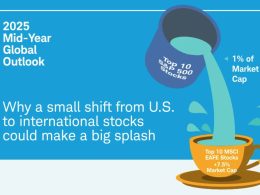by Brian Wesbury, Chief Economist, and Robert Stein, Deputy Chief Economist, First Trust Portfolios
Total deaths in the US from COVID19 look like they'll hit at least 3,000 by the end of March. A potentially brutal April lies ahead.
In the meantime, the measures taken to limit deaths have temporarily tanked the US economy. Initial claims for jobless benefits soared to 3.283 million per week, easily the highest ever. The prior record was 695,000 in October 1982; the highest during the Great Recession was 665,000.
Policymakers have reacted to the economic damage with massive measures. The Federal Reserve has reduced interest rates to nearly zero, has begged banks to use the discount window, embarked on unlimited quantitative easing, and is backstopping an unprecedented array of markets, including commercial paper, money markets, commercial mortgages, and municipal securities.
Meanwhile, we have a newly enacted "stimulus" bill that could total $2 trillion, possibly more. These include IRS checks, a major expansion in unemployment benefits, as well as a broad combination of grants, loans, and loan guarantees for businesses (large and small), hospitals, schools, and state and local governments.
The federal budget deficit for this fiscal year, previously estimated by the Congressional Budget Office to be about $1.1 trillion, could easily run around $2.5 trillion, and that's without other major spending bills. Since World War II, the largest budget deficit relative to GDP was 9.8% in 2009; but a $2.5 trillion deficit this year could be about 11.8% of GDP.
Of course, these monetary and fiscal measures are on top of the massive economic interference - designed to stem the virus -by governments at all levels. The longer these measures persist, the greater the risk of atrophy setting in for small business across the country, making them less able to reopen in the future. The loss of intangible capital would be enormous, the internal knowledge of how to get things done. Slower economic growth in the post-COVID19 world would be the result.
It's important that the expansion of government is not made permanent. The New Deal took annual federal spending from about 3% of GDP to about 10% of GDP (before World War II) and we never went back, or even close. Policymakers need to avoid making COVID19 an excuse for another permanent leap upward in the size of government, which would erode future living standards versus where they would otherwise go.
Once we have a vaccine, some things have to change. Governments at all levels should consider "strategic health reserves" of masks, ventilators, respirators,...whatever is needed in an emergency, so we don't have to take drastic measures again. Our recent response should not be a periodic feature of American life.
Dr. Fauci recently said there could be 100,000 – 200,000 deaths. The mid-point would be 47 people per 100,000 residents, not much different from the number of people the US lost to the flu in early 1953, late 1957, early 1960, the peak of the 1968-69 Hong Kong Flu, or early 1976.
Those episodes didn't permanently expand government and neither should this one. In order to be better prepared in the future, we need a vibrant private sector, not a permanent expansion in government.
Brian S. Wesbury - Chief Economist
Robert Stein, CFA – Deputy Chief Economist
Click here for PDF version
Copyright © First Trust Portfolios















